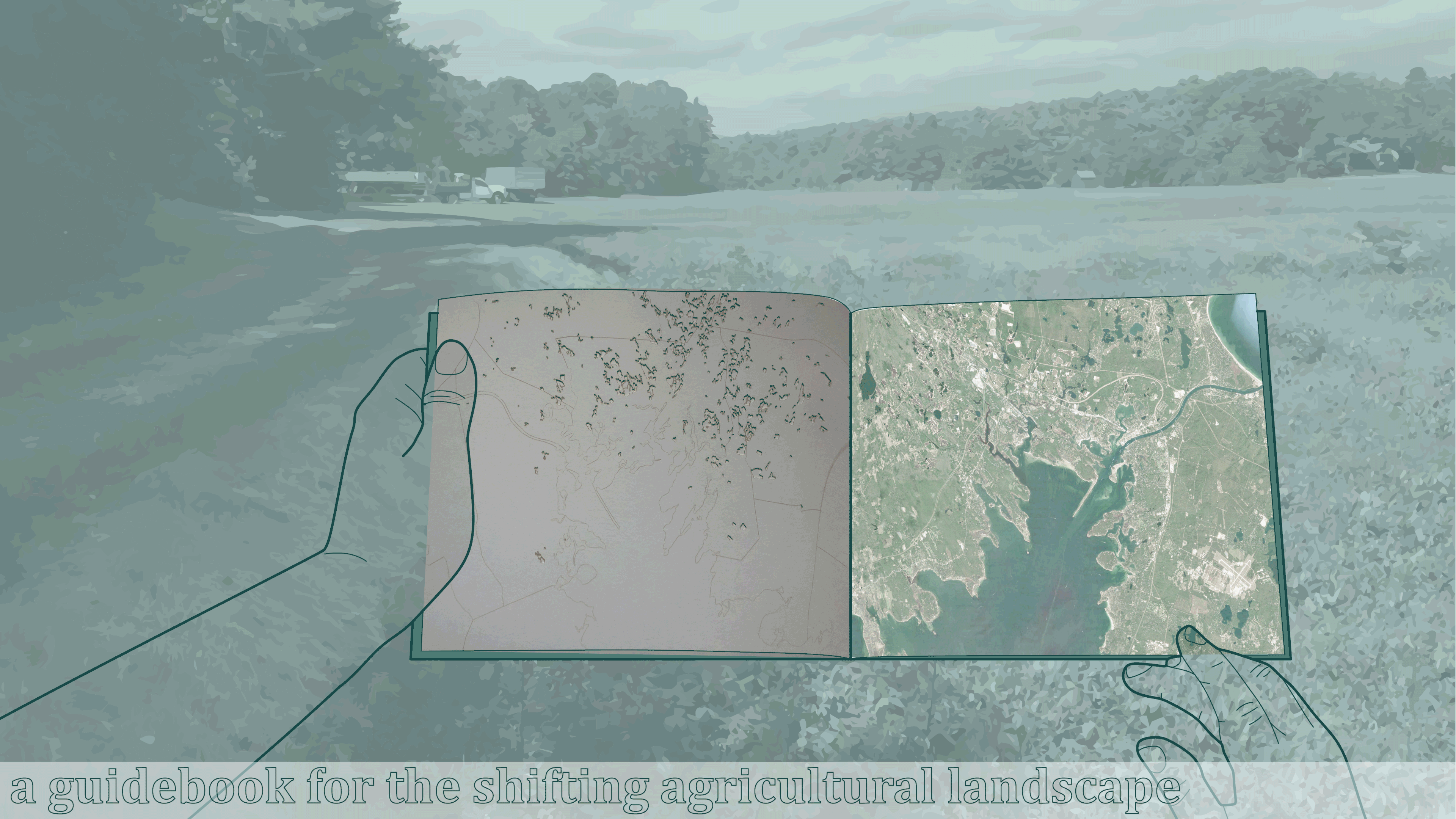In New England, the techno-ecological landscapes that once supported everyday life have been transformed by the market orientation of fossil capital. Relocated overseas, fragmented by urbanization, or restructured by changing economies, the physical remnants of socially productive landscapes have been romanticized.
This project serves as a guidebook for converting cranberry bogs to rice paddy and salt marsh landscape systems through a series of removals, rearrangements, and relocations of plant material, soil, and marshes. Introducing fish to decrease methane emissions and contribute to a shifting agricultural landscape.
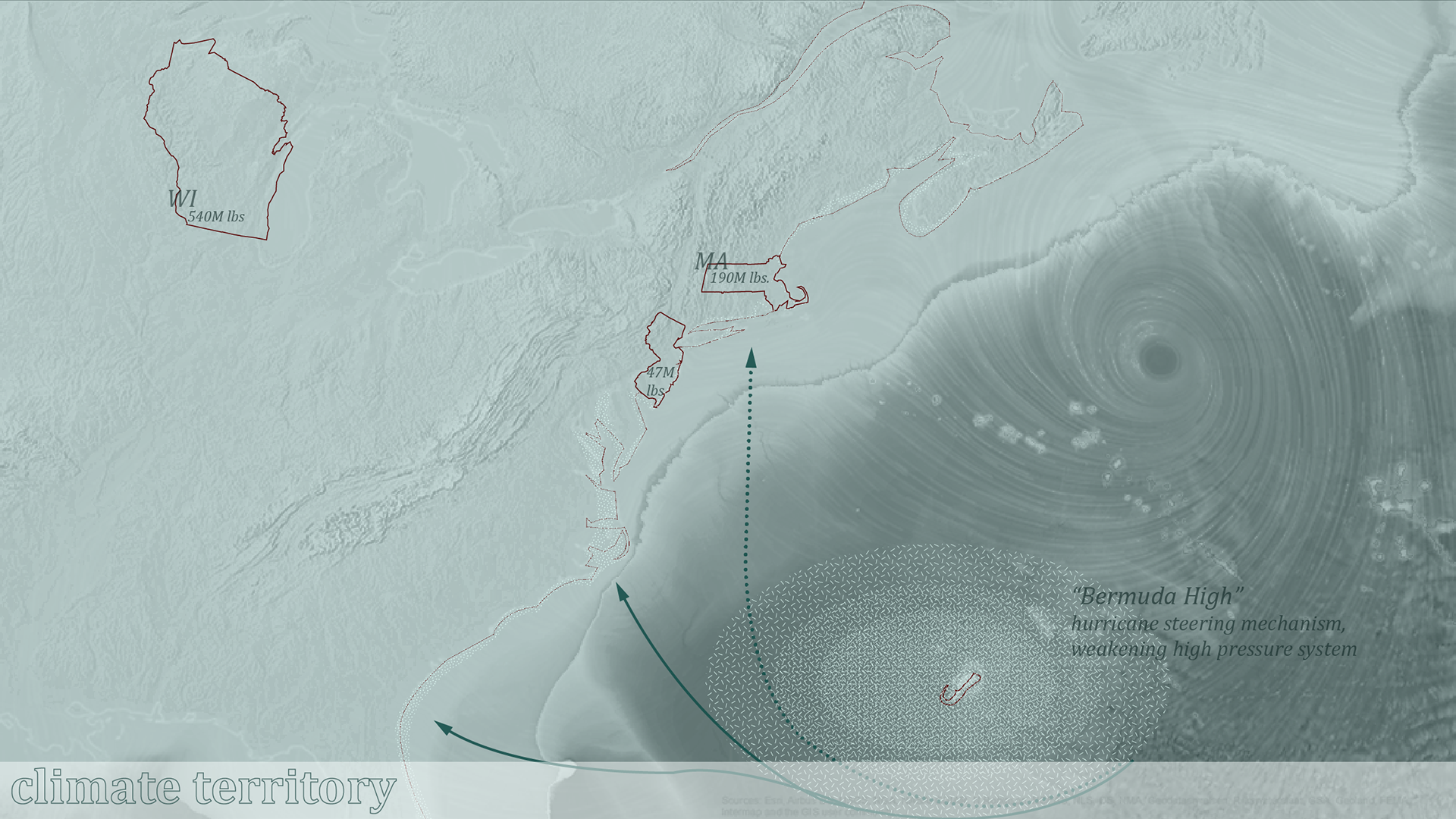
In 2019, American cranberry farmers disposed of 194 million pounds of their annual harvest due to low demand. In the same year, Massachusetts alone produced 190 million pounds of cranberries. Considering the fact that Massachusetts creates about as many cranberries as the United States destroys, a new agriculture must be considered to interrupt this waste of energy, resources, ground, and skill.
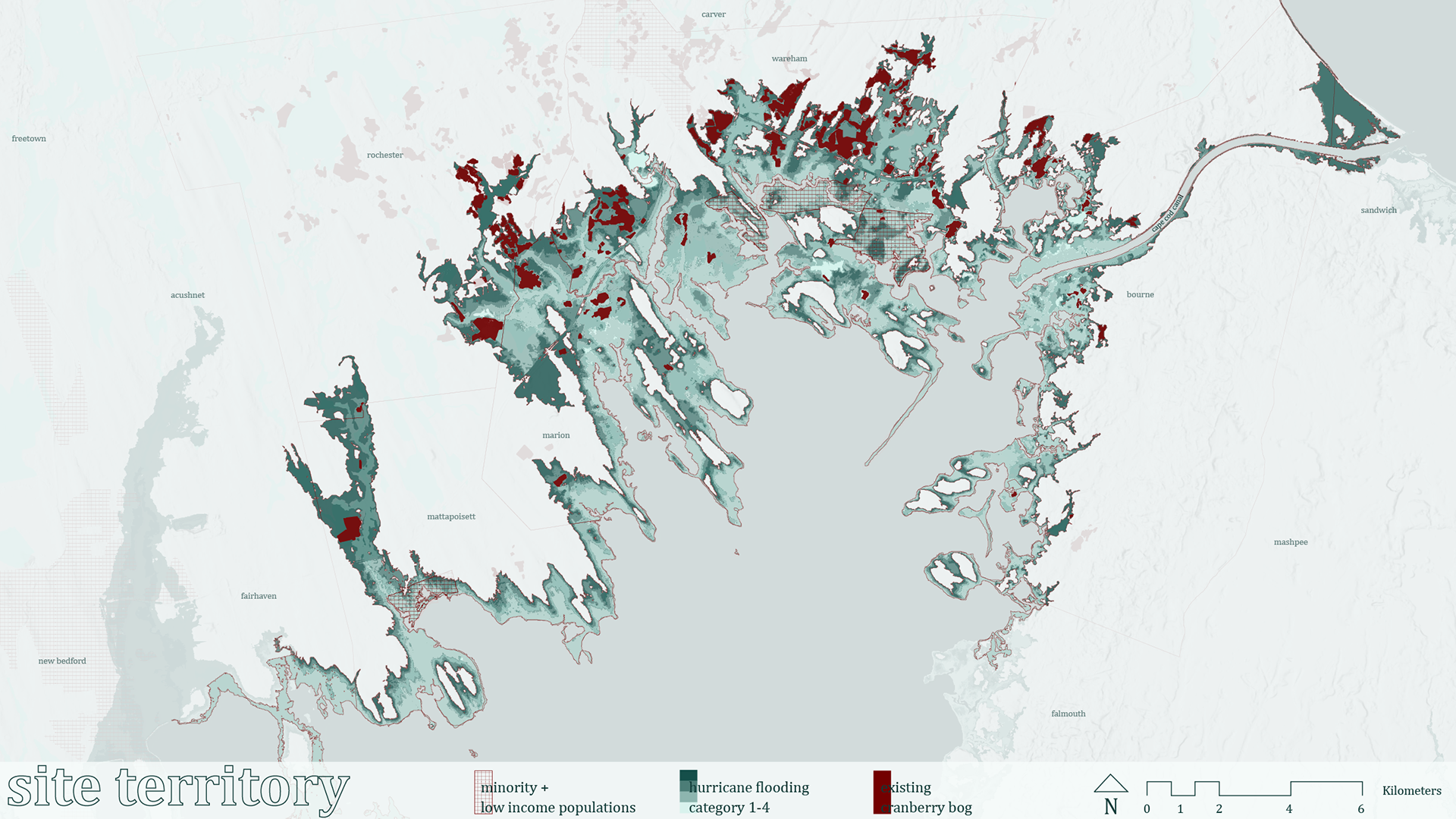
Wareham, Massachusetts is home to the most cranberry bogs in the state, in a landscape predisposed to bog farming due to its geology. The coastal town is also in a primary location for future hurricane landfall. The site territory is defined by the overlap of inland hurricane surge and the presence of cranberry bogs.
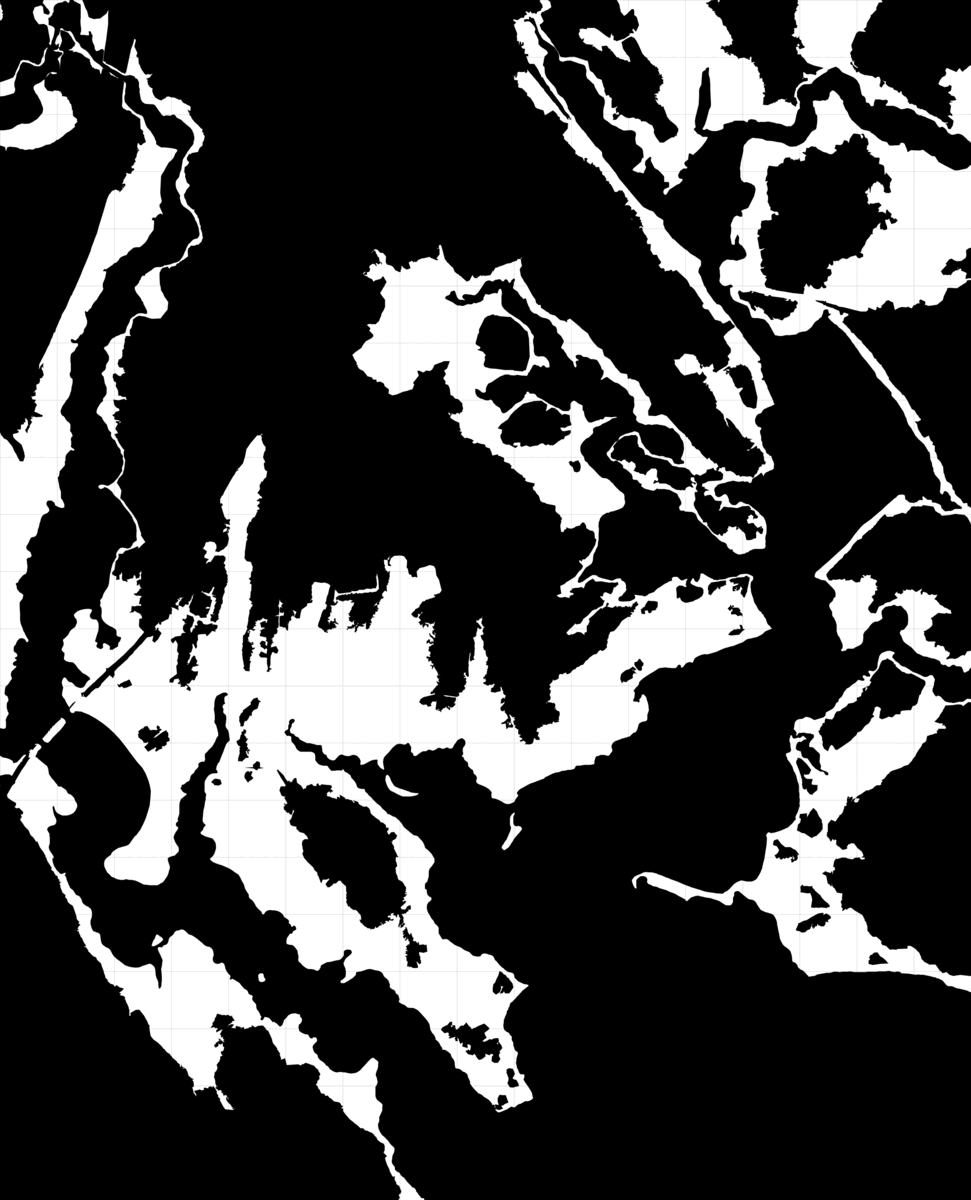
A Nolli style map of coastline migration illustrates projected land lost to hurricane surge flooding.

By looking at comparable bog crop typologies like rice, and searching for cold-loving species across latitudinal parallels, several viable choices arise from Carnaroli to Duborskian to Hayayuki.

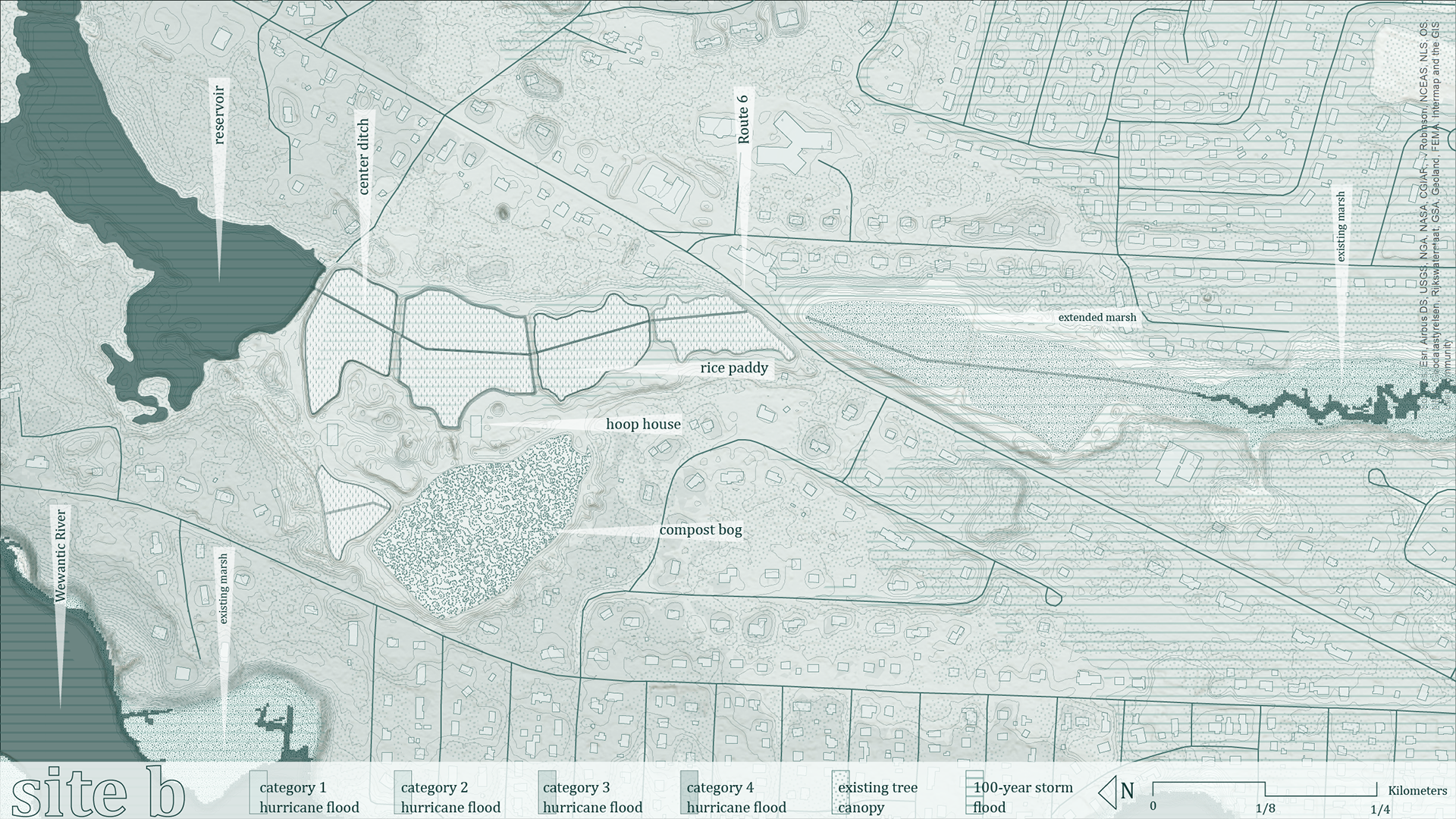
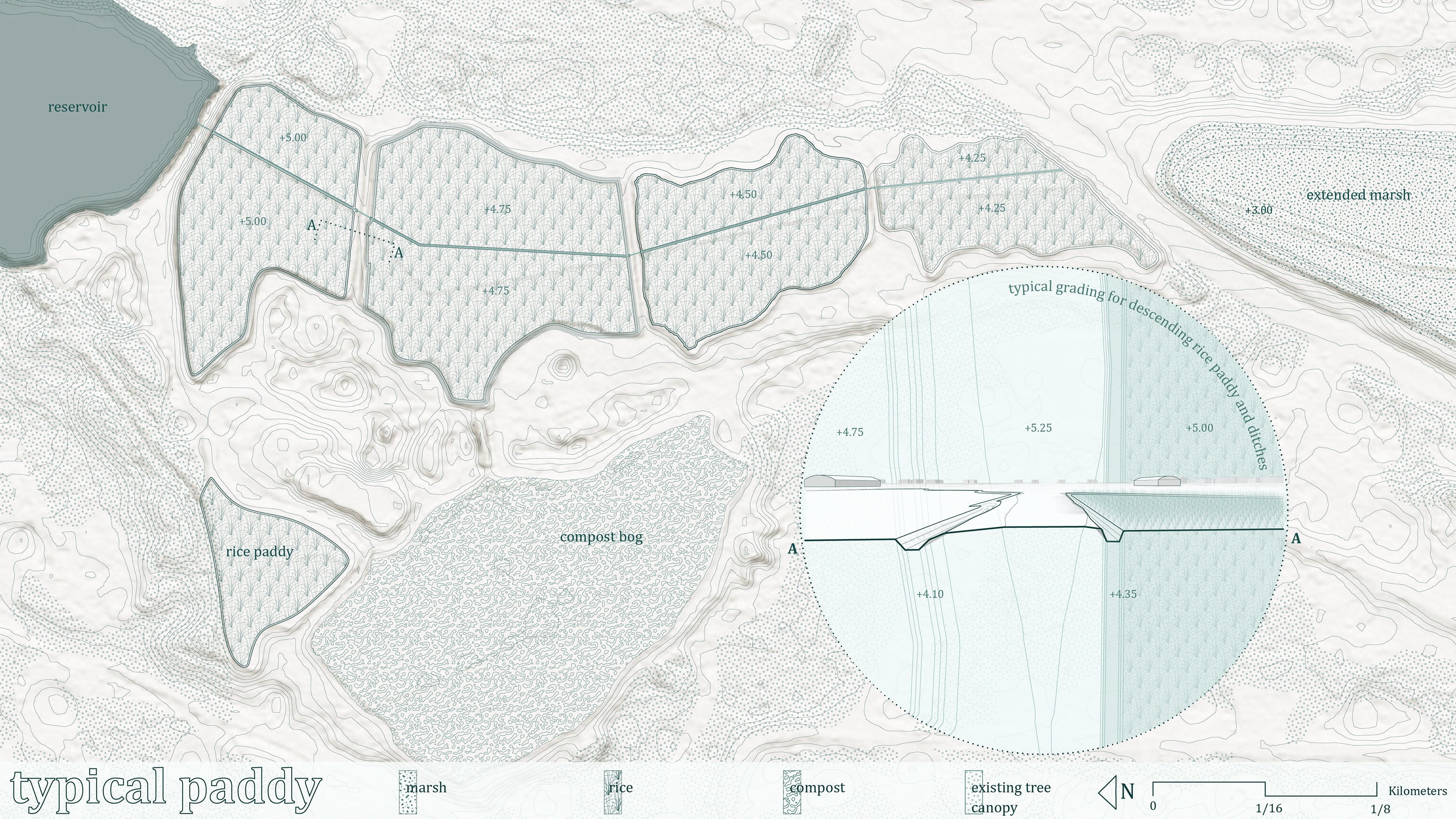
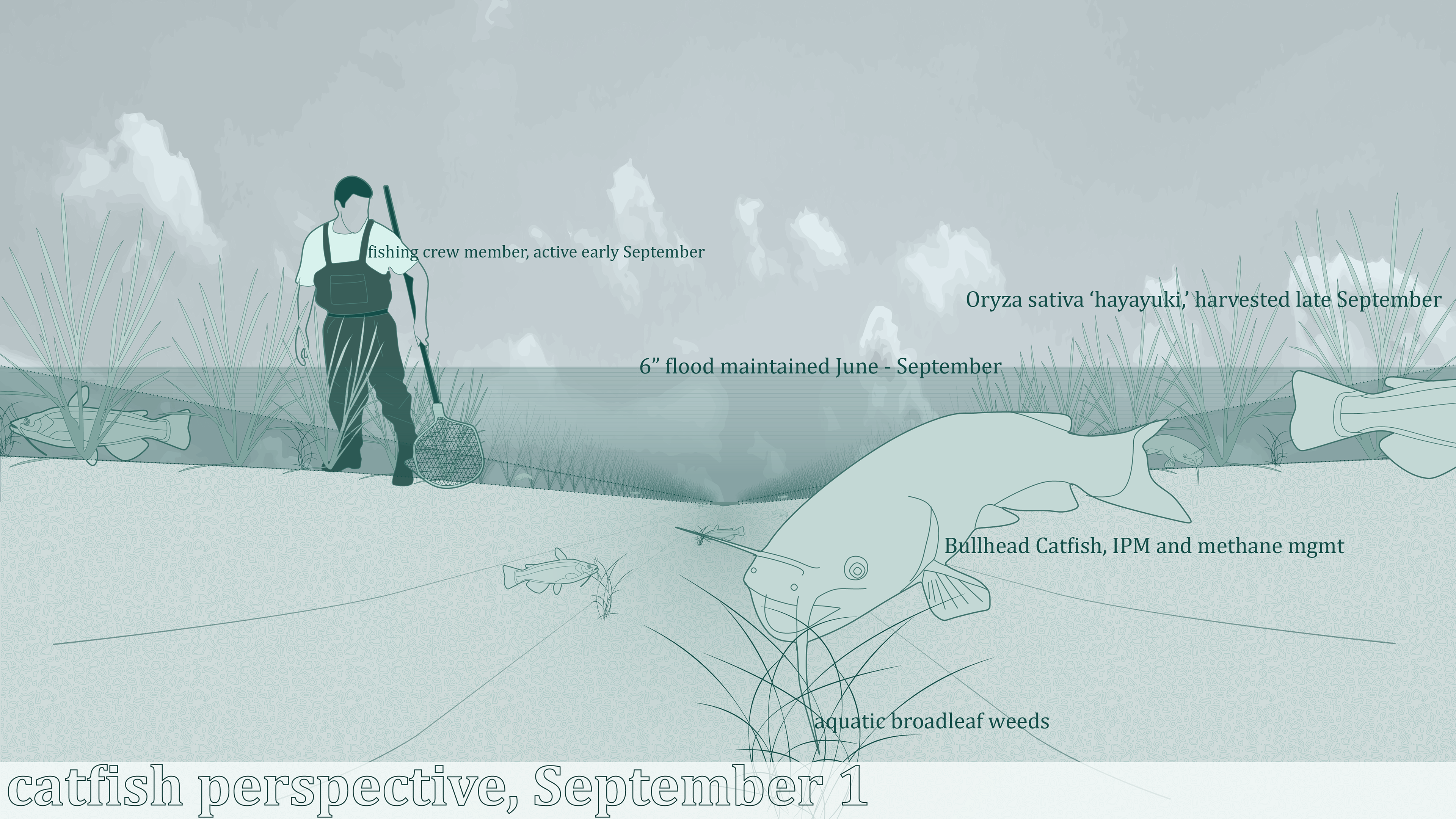
Changes in the landscape while migrating from cranberry to rice will mainly consist of a shift in tools and patterns. Bogs closest to existing marshes are converted to marshes, expanding coastal protection from hurricane flooding into the landscape. Once given over to the marsh, this bog will be left to the process of nature. Larger bogs are used for composting retired cranberry plants and future site waste. Remaining bogs are cultivated as rice paddies, using fish as IPM and methane reducers.
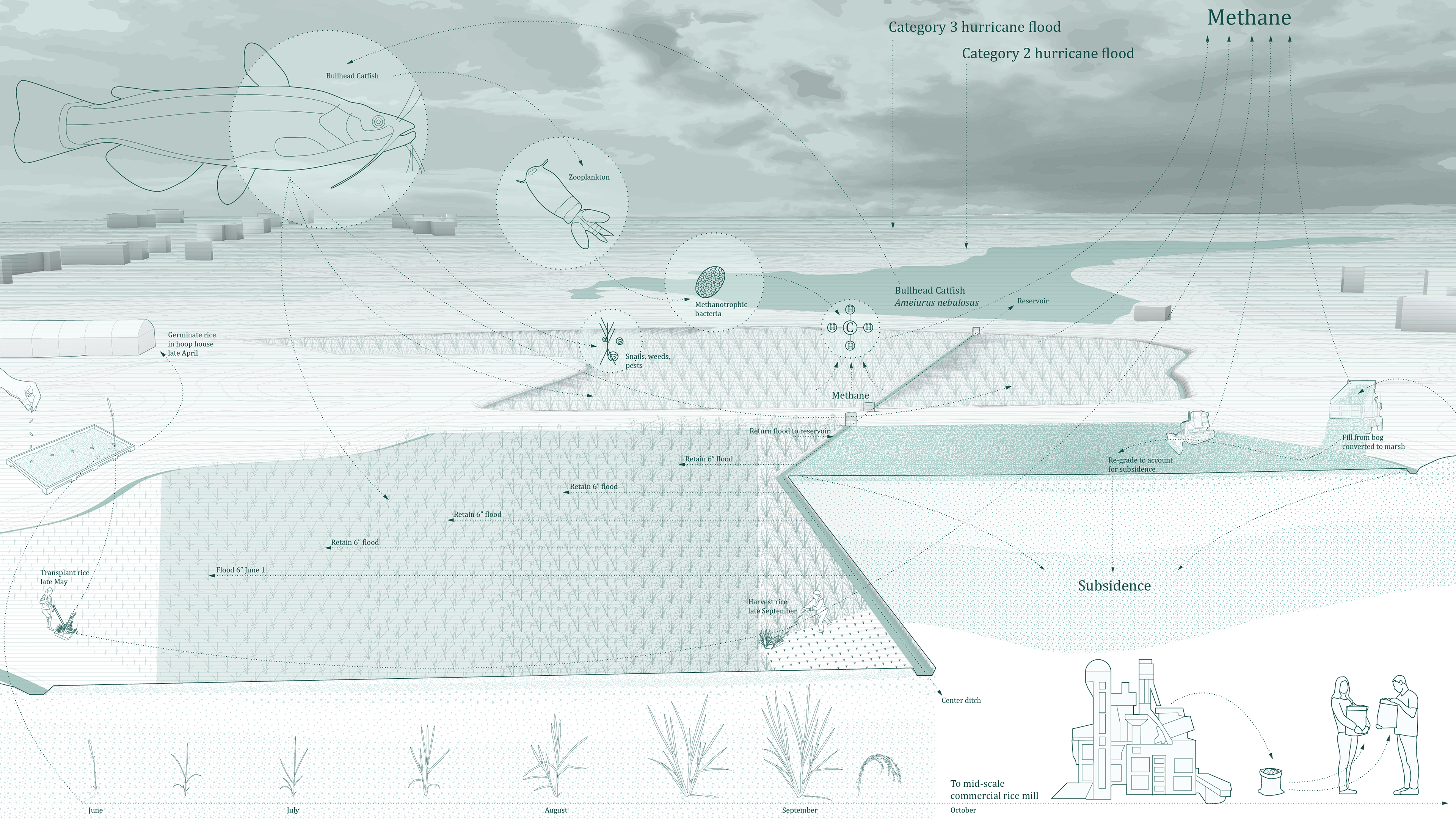
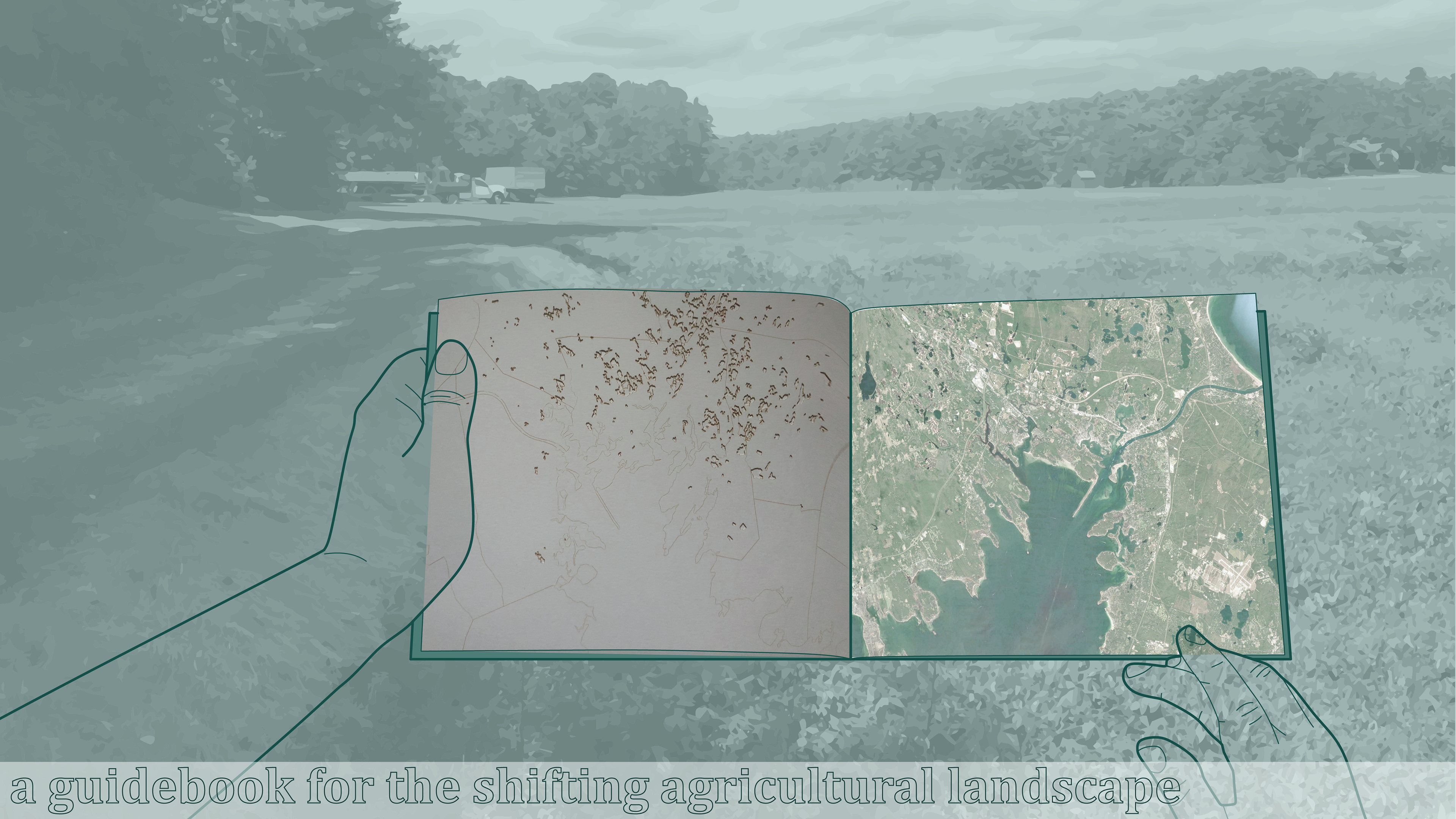
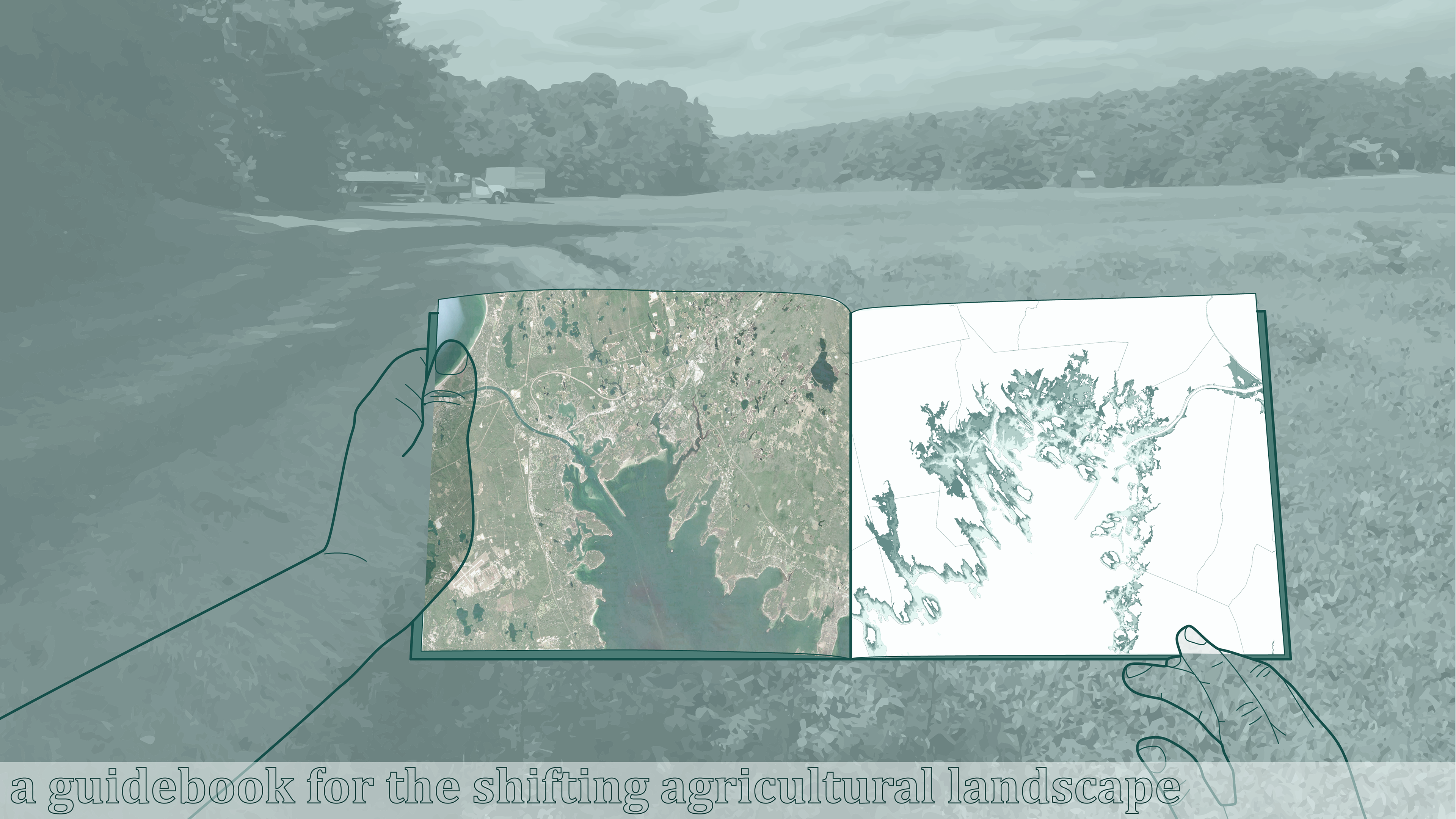
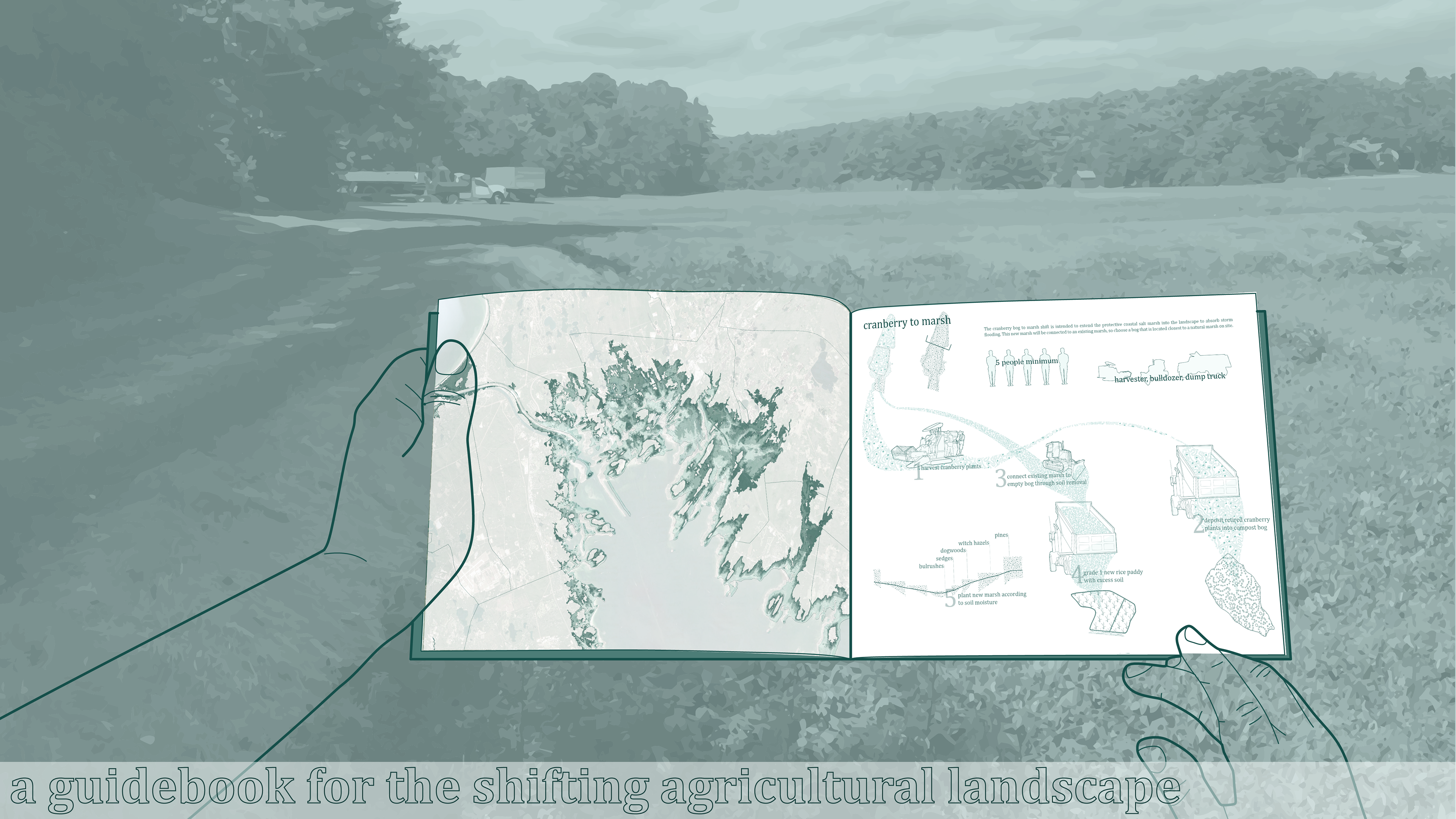
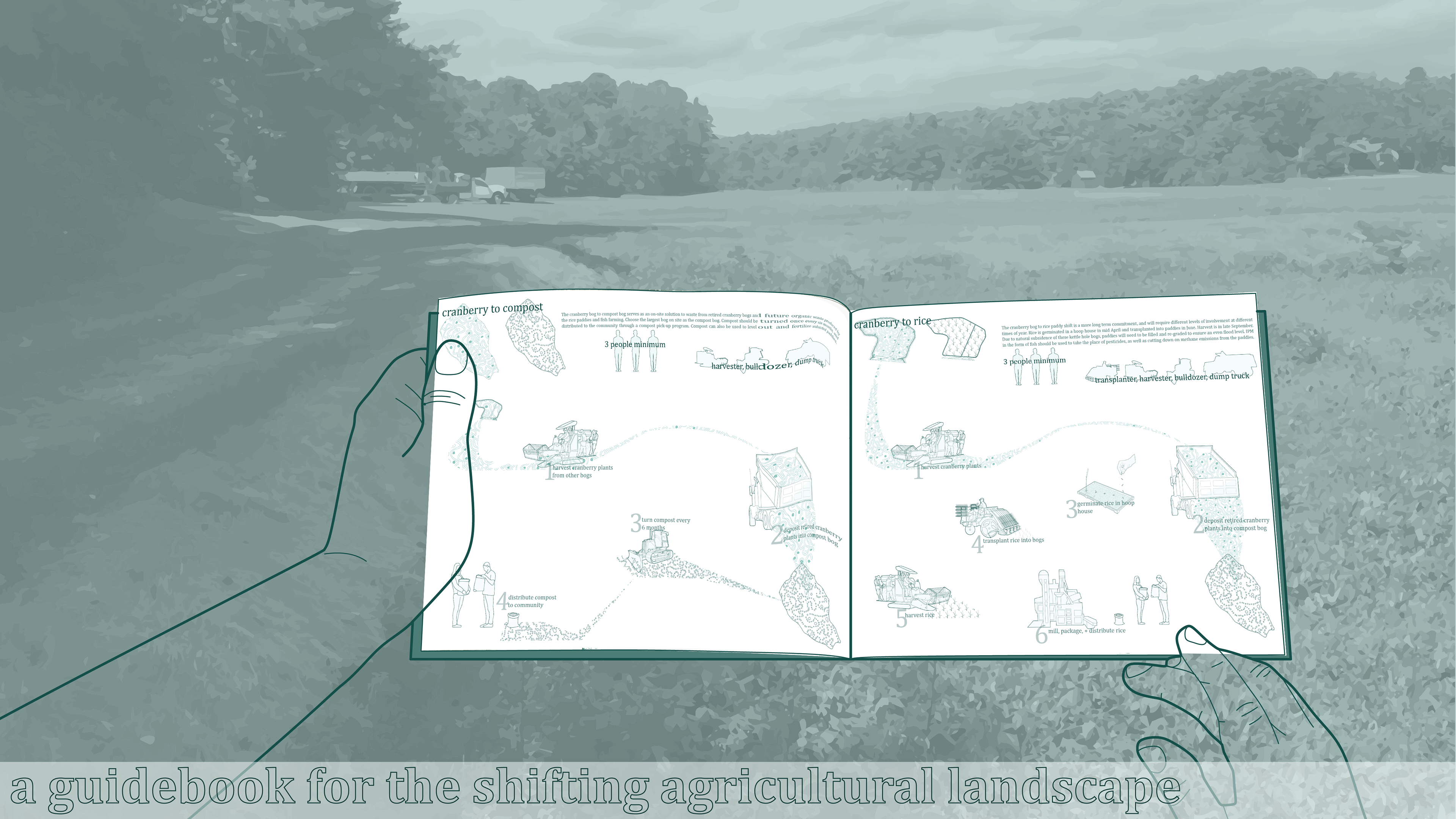
The guidebook connects cranberry farmers to impending hurricane flooding that may affect their bogs. A laser cut map of bogs is overlaid with a conventional map, illustrating at-risk landscapes, followed by flooding zones to guide farmers in assessing flood risks. The final pages outline order of operations guidelines for retiring cranberry agriculture and shifting to marsh expansion, composting, and rice farming.
